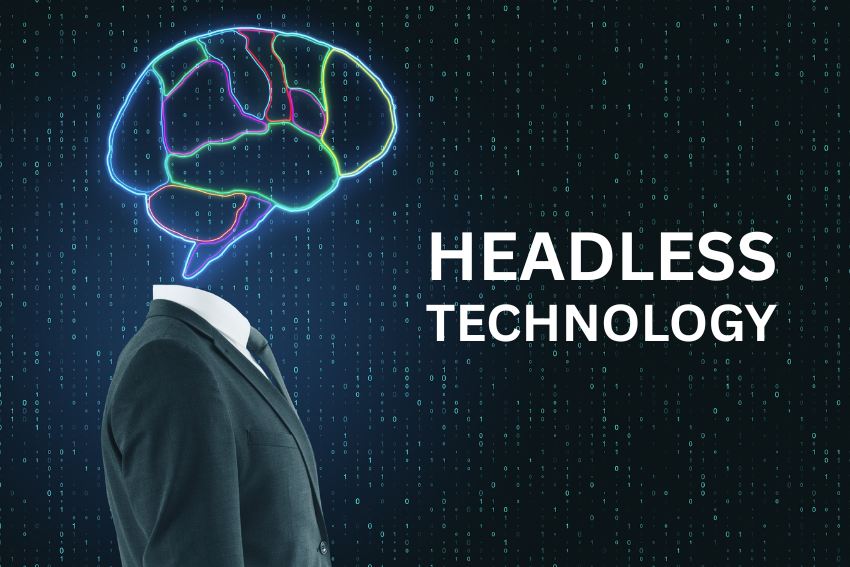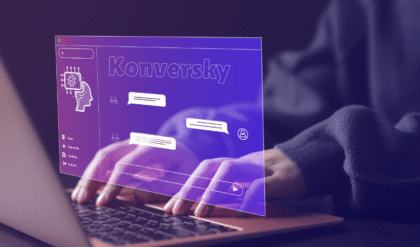Introduction to Headless Technology
Headless technology is transforming how the developers create websites and app. It is a contemporary solution that divides back-end (where the data is stored) and front-end (what users perceive). It is like a car: the engine (back-end) makes everything go, but the dashboard and seats (front-end) are what makes the journey worthwhile. Separating out these layers, headless technology provides developers with greater freedom to develop customized experiences that make the user experience intuitive. So, what makes it so big? Let us dissect and see why.

The Basics of Headless Technology
Headless technology removes the “head” (the front-end presentation layer) from the traditional setup of a website or application. With a standard content management system (CMS) such as WordPress, the front-end and the back-end are closely integrated. CMS system deals with the content (text, pictures, videos) and its presentation (design and layout). In headless, the back-end continues to store and manage content, however this content no longer determines how it appears to the end user. Rather, it provides unprocessed data over APIs (Application Programming Interfaces) to any front-end platform, whether that is a website, mobile app, or even a smartwatch.
What is the relevance of this? Since it allows developers to exploit popular frameworks such as React, Vue.js, or Angular on the front-end. They are able to generate bespoke designs and they are not tied into the constraints of a traditional CMS. The result? More dynamic and quick user experiences.
How Headless Technology Works
Think of headless technology as a restaurant kitchen. The back-end is the chef, cooking the ingredients (data such as blog posts, product information or user accounts). The waiter is the front-end since he presents that food to the customers in a manner that appears attractive. The pass-through window is the API, which takes the work of the chef to the waiter. The waiter has freedom to plate the food (data) in any way they desire, be it fancy or basic and does not have the chef nipping at their heels about plating.
Technically speaking, a headless CMS manages content in a database, and provides it as APIs, usually REST or GraphQL. These APIs are then used by the developers to fetch the content into any front-end environment. With this configuration, identical content can serve more and more platforms, including websites and IoT, without having to recreate the back-end separately on each platform.
Why Headless Technology Is Gaining Popularity
Headless technology is thriving because of several reasons.
Flexible
Companies are now able to push content to any device, or any platform in the case of smart phones, or tablets, even Alexa. This is massive in an era where consumers demand device-to-device continuity.
Developer-Friendly
The freedom to work with one favorite tools and frameworks is loved by programmers. They do not have a particular CMS theme or plugin ecosystem they are stuck to. This implies quicker development, and greater creative control.
Scalable
A business can scale up with a headless structure and it can accommodate more traffic or additional platforms without the need to change the entire system. How about adding a mobile app? No problem. Simply fetch the same content through the API and you can create a new front-end.
Enhances Performance
By decoupling the front-end, developers can optimize that aspect to be fast, such as with static site generation, or server-side rendering. More nimble websites imply more satisfied visitors and improved search engine optimization results.
Benefits of Headless Technology
Let’s dive into some specific advantages:
- Omnichannel Delivery. Content can go anywhere—websites, apps, smart TVs, or even AR/VR devices. One back-end powers it all.
- Improved User Experience. Developers can craft tailored, responsive designs that work across devices, making your brand feel polished and professional.
- Future-Proofing. Headless systems are built to adapt. New tech trends? You’re ready without rebuilding your entire platform.
- Better Security. Since the back-end is decoupled, it’s less exposed to front-end vulnerabilities, reducing the risk of attacks.
- Team Collaboration. Developers and content creators can work independently. Writers update content in the CMS; coders tweak the front-end. No stepping on toes.
Challenges of Headless Technology
Everything is not so easy. There are also challenges to headless technology. Firstly, it needs a greater technical expertise. When you are not a developer, handling a headless setup is intimidating. You will probably require an experienced team to work with the front-end code and API connections.
It may also be costly in the short term. Custom front end development is time-consuming and resource-intensive as opposed to a ready-made CMS template. The prices may be inimical to small companies or individual entrepreneurs.
The content management becomes less intuitive as well. Drag-and-drop design is typically supported by the visual editor of traditional CMS platforms. Under headless, the content editors may be required to be dependent on the developers to preview how their work would appear on the live environment, slowing the process.
Headless Technology in Action: Real-World Examples
Large companies are also hopping on the headless horses. Take Netflix. The headless technology enables them to serve content on multiple devices ranging between smart phones, televisions, laptops with consistency on the back-end. This will make it smooth no matter whether you are watching on your phone or 4k TV.
Such e-commerce sites as Shopify adopt headless configurations as well. Merchants have an opportunity to design their own storefronts in a custom manner and pull product information through Shopify back-end. It is a success in branding and functionality.
Even smaller business benefit. A restaurant in the area may have a headless CMS that allows them to maintain their menu, provide an update to the web, mobile, and digital signage all handled out of the same location.
Is Headless Technology Right for You?
Thinking whether headless technology is a right fit? It will depend on your needs. A conventional CMS such as WordPress may be more straightforward and less costly in case you already run a basic blog and have a small staff. However, headless is an option to consider when you have a growing business with multiple platforms, or you want to have more creative control as a developer.
Ask yourself:
- Do you need content on multiple devices or channels?
- Is your team comfortable with API-driven workflows?
- Are you prioritizing speed, flexibility, or scalability?
If you’re nodding yes, headless technology could be your next step.
Getting Started with Headless Technology
Ready to dive in? Here’s a quick roadmap:
- Choose a Headless CMS. Popular options include Contentful, Strapi, or Sanity. Each offers robust APIs and flexible content modeling.
- Pick a Front-End Framework. React, Next.js, or Vue.js are great choices for building dynamic, responsive interfaces.
- Connect the Dots. Use APIs to link your CMS to your front-end. Test thoroughly to ensure content flows smoothly.
- Optimize for SEO. Headless setups can be SEO-friendly, but you’ll need to manage metadata, sitemaps, and structured data manually or with tools.
- Launch and Iterate. Start small, test your setup, and scale as needed.
The Future of Headless Technology
Headless technology is not going away. With the increasing level of smart devices and their increasing user requirements, the need to have flexible, fast and scalable systems will only rise. Such trends as the introduction of AI-powered content personalization and voice interface are furthering the adoption of headless. Companies that intend to remain competitive will be forced to adjust- or be left behind.
Wrapping Up
It is not just a term of hype about headless technology. This tech is an empowering transformation in the way we construct online experience. It is the most flexible, scalable and high performance since it divides content and presentation. Of course, it also brings in challenges, but the reward would be worth it to businesses and developers who wish to stand out. You are a small startup or a household name; headless technology will enable you to present your content to your audience everywhere and at any time.
What, then, is to be done? Look at headless CMS opportunities and discuss it with your developer team and determine whether it suits your vision. The options are limitless.





